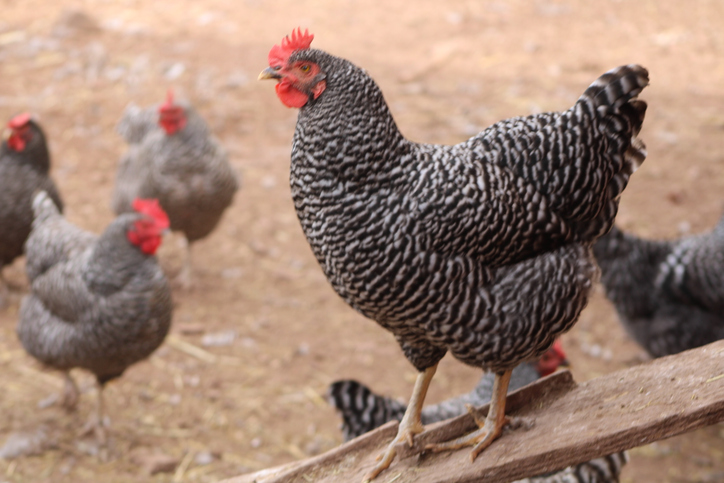Although embryonic stem cells (ESCs) have been successfully derived from mice and rats, efforts to establish chimeric and germline-competent ESC lines in species beyond rodents have been unsuccessful. Now, new research has identified a key component to cultivating bird ESCs in the lab; a medium of egg yolk—and other key factors—allowed a USC Stem Cell-led team to successfully derive and maintain authentic ESCs from chickens and seven other bird species. These bird ESCs hold promise for applications ranging from studying embryonic development to producing lab-grown poultry to reviving endangered or even extinct birds.
The study appears in the paper “Derivation of embryonic stem cells across avian species,” in Nature Biotechnology.
“A true embryonic stem cell has two key qualities: it is self-renewing and can multiply to produce more stem cells; and it is pluripotent, meaning it can differentiate into all cell types of the embryo—both in a culture dish and after being reintroduced into an embryo,” said Qi-Long Ying, PhD, a professor of stem cell biology and regenerative medicine at the Keck School of Medicine of USC. “In this study, we successfully derived and maintained true self-renewing and pluripotent ESCs from chicken, quail, pheasant, turkey, duck, goose, peafowl, and ostrich.”
The team isolated blastodermal cells from freshly laid Rhode Island Red (RIR) chicken eggs at the EGK.X stage. Morphologically undifferentiated ESC colonies emerged when the culture medium was supplemented with either the Wnt/β-catenin signaling inhibitor IWR-1 or the protein kinase C (PKC) inhibitor Gö6983. When exposed to these two factors, the chicken cells exhibited genetic markers of stem cell pluripotency. However, they could not be maintained in the lab long-term.
The researchers made the observation that “chicken ES cells exhibited improved growth when a larger amount of egg yolk was carried over during embryo isolation.” ESCs retained their undifferentiated state for up to two weeks of initial plating when the culture medium, which contained residual yolk, was left unchanged and cells were not passaged. In an attempt to maintain the culture, the researchers transferred the blastoderm cells from their eggs together with larger amounts of yolk. Under these conditions, the cells were able to self-renew in the lab.
An analysis of the yolk revealed the presence of ovotransferrin, which enabled the team to derive and maintain ESCs from several chicken breeds. Surprisingly, the three-ingredient cocktail that worked for chicken ESCs didn’t show the same success in promoting ESCs from other avian species; different species required variations of the cocktail. For example, pheasant, duck, and turkey ESCs needed a fourth component—the chemical SB431542—to block differentiation into beating heart muscle cells and enable maintenance of stem cell identity. Quail, geese, and peafowl ESCs required all four of these components plus a fifth component—the pluripotency-related signaling protein LIF derived from chickens. Ostrich ESCs failed in this five-ingredient cocktail, but successfully maintained their stem cell identity when the scientists removed the chicken LIF and reverted to the four-component version.
Chicken ESCs self-renewed over a long period of time while maintaining a high degree of pluripotency with the five-component mixture. Under these optimized conditions, chicken ESCs could form the three primary cell layers of the early embryo. They could also differentiate into reproductive germ cells, such as sperm, as well as somatic cells. In addition, they were able to make a chimera; when the chicken ESCs were introduced into a developing chicken embryo, the resulting animal developed from a mosaic of cells from both sources. When the developing embryo was albino, chicken ESCs could contribute pigmented feathers to the chimera.
ESCs from the other avian species also passed key tests of pluripotency. Quail, goose, and ostrich ESCs displayed classic pluripotency-associated genetic markers. Quail ESCs could differentiate into all three early embryonic layers, while goose ESCs could contribute to germ cells. And quail and goose ESCs could both contribute to chimeras. In addition, chicken ESCs could be genome edited using CRISPR and other tools, expanding their usefulness for applications in both research and biotechnology.
“By demonstrating that we can derive and maintain authentic ESCs from several avian species, this research opens up so many possibilities,” said Ying. “As we continue to expand our ability to derive avian ESCs, we can imagine engineering healthier chickens for the poultry industry, incubating therapeutic proteins inside of eggs for pharmaceutical development, or reviving endangered or extinct species to support conservation and biodiversity efforts. There are so many exciting applications of this technology, and this study is only the beginning.”

